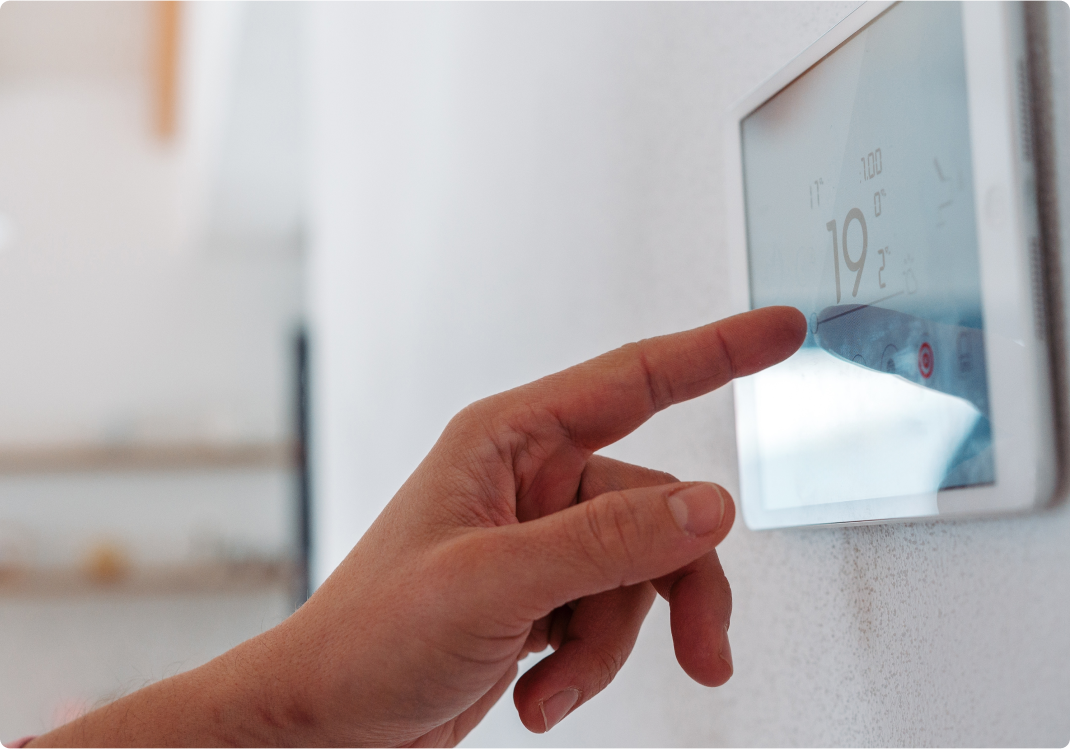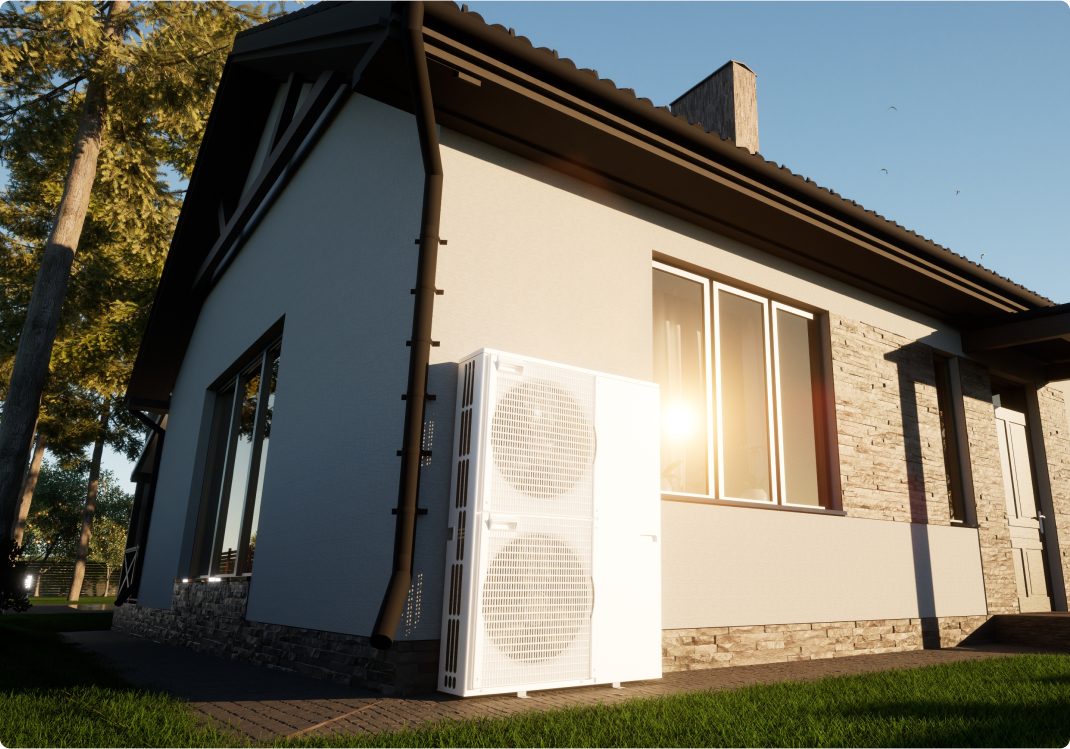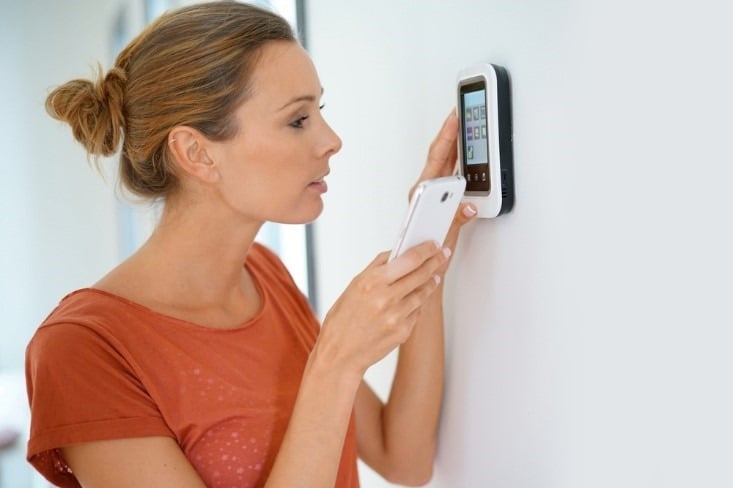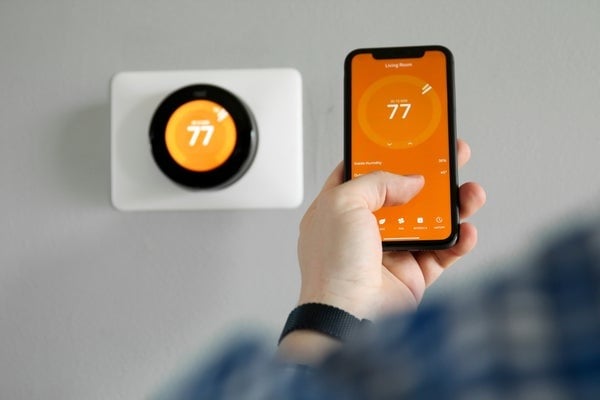2. Setting
Should you set the thermostat in the "on" or “auto” position? If you want to save energy and money, the answer is usually “auto.” Here’s why:
When your thermostat is in the “on” setting, the blower will run regardless of whether the temperature set point has been reached. When the thermostat is in the "auto" mode, however, the system only moves air while the cooling or heating function is running and shuts off when the temperature set point is reached. Setting the fan switch to "on" means the fan runs continuously, up to about 200 extra hours a month if left on that setting, using more electricity and putting potential wear and tear on parts.
Some people mistakenly think that keeping the fan in the "on" position reduces humidity but the opposite is true. Setting your air conditioner fan to “auto” actually helps decrease humidity because it gives condensation a chance to drain instead of sending it back into the home. Although the "on" setting may waste energy when left in that mode, it can be a useful setting for when you need to flush air out of your home, such as after accidentally burning something in the kitchen.
3. Manual or Programmable
You can accomplish the same energy- and cost-saving goals- using the same temperature and thermostat settings, with either a manual or a programmable thermostat. A programmable thermostat simply makes it easier to be more consistent with your settings because you adjust the times that you turn on or change your heating and air conditioning temperatures with a pre-set schedule. Smart programmable thermostats even let you control your home’s temperature remotely from a smartphone or tablet.
Before you purchase a programmable thermostat, make sure it is compatible with your heating and cooling system. Most programmable thermostats are digital, electromechanical, or a combination. Installing a programmable thermostat is usually a do-it-yourself project.
3 tips for programming your thermostat
1. Program According to Your Household's Schedule
When programming your thermostat, consider your household’s typical weekly routine. Many programmable thermostats allow you to set different temperatures for weekends and weekdays. Adjust the settings based on your normal bedtime, wake-up times, and periods when the house is usually empty.
2. Take Advantage of the "Hold" Function
But what does the hold button mean on your thermostat? The "hold" function on many digital programmable thermostats can be a lifesaver when your schedule changes unexpectedly. If you’re home on a day you’d usually be out, simply press the “hold” button to maintain the current temperature without disrupting your entire week’s schedule.
- Hold vs set on thermostat: The "hold" function allows you to temporarily maintain a specific temperature, overriding the programmed schedule, while the "set" function is used to establish the regular daily temperature schedule that the thermostat will follow unless "hold" is activated.
- Hold vs run on thermostat: The "hold" button keeps your thermostat at a fixed temperature until you decide otherwise, whereas the "run" button returns the thermostat to its pre-programmed schedule, resuming normal operations and temperature settings.
3. Ensure Proper Thermostat Placement and Household Knowledge
Regardless of the type of thermostat you have, its placement is crucial for accurate operation. Install the thermostat on an interior wall, away from direct sunlight, drafts, doorways, skylights, and windows to avoid inaccurate temperature readings. Also, make sure that furniture or artwork isn’t blocking the thermostat. Finally, educate everyone in your household on how to set the thermostat and how to use the thermostat correctly, including the difference between “on” and “auto” settings, and how to manage the programmable features. Energy savings are a team effort, and when everyone is on the same page, you’ll see the cost savings add up more quickly.
Thermostat troubles? Don’t worry, be warranty.
After you’ve saved a lot of money by smartly setting your thermostat, the last thing you want is to lose it all in an inevitable breakdown. With an American Home Shield® home warranty, you’re protected from the high costs of repairing or replacing your heating, air conditioning, and other essential systems and appliances. From helping you install a smart thermostat to seasonal HVAC tuneups, American Home Shield is here to help you keep your home running smoothly.
For more penny-pinching ideas including how to update your fireplace or get tough odors out of carpet, check out Cost Savers from our Home Matters blog.




